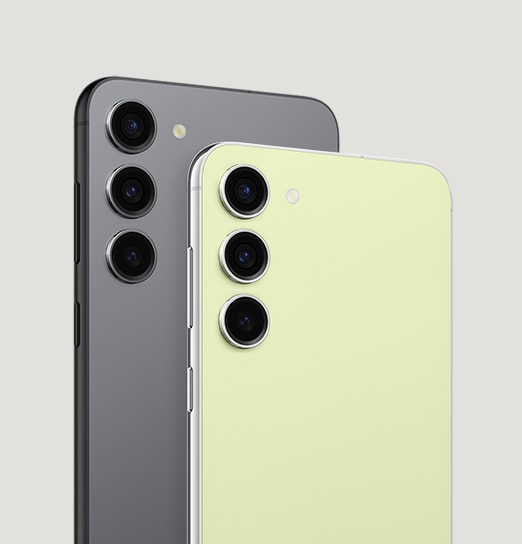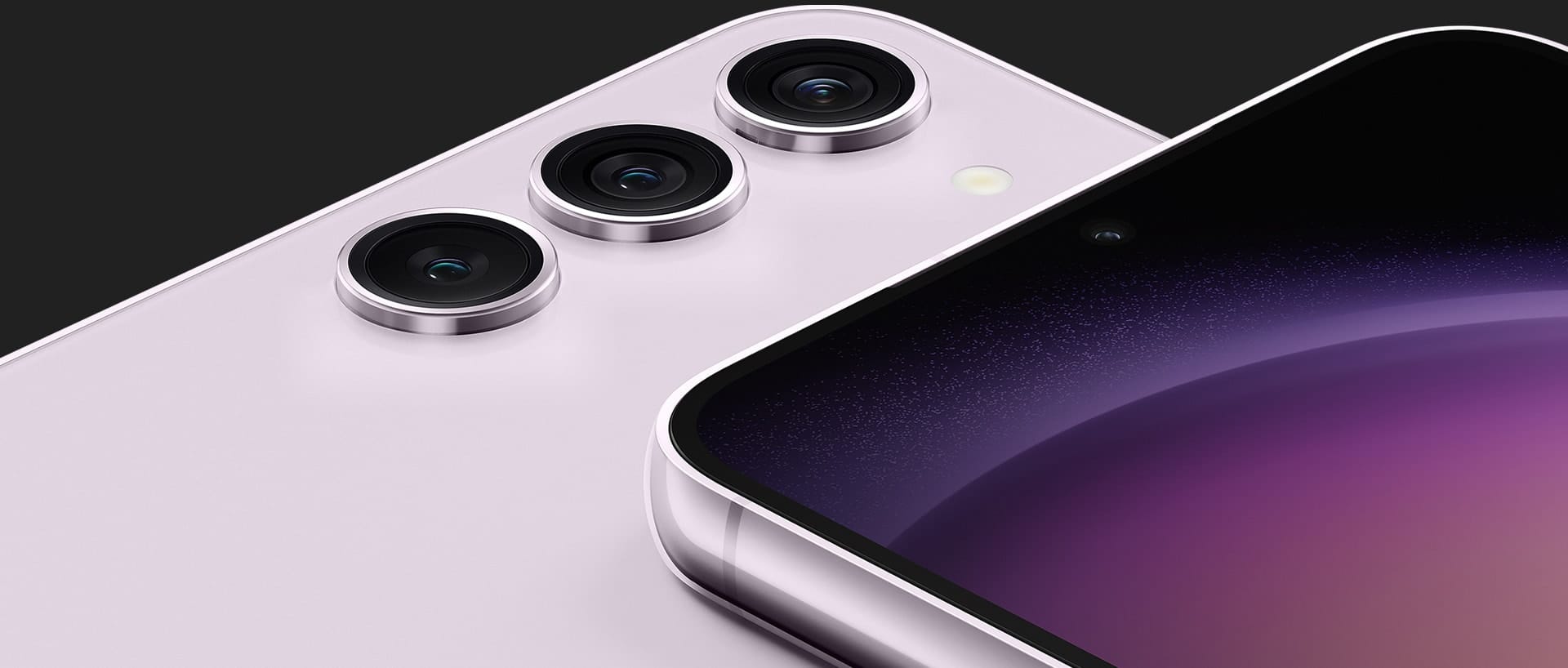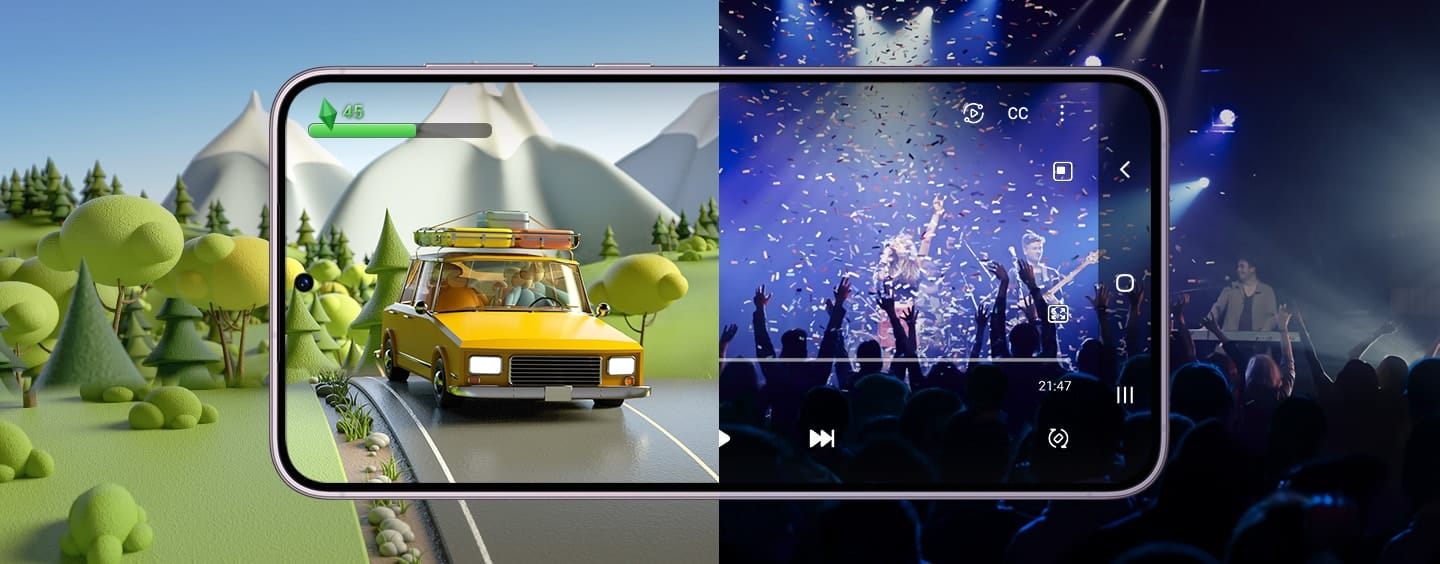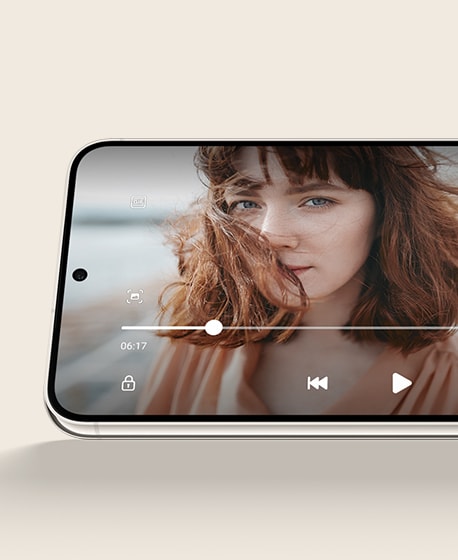
|
|
Samsung Galaxy S23
|
Overview
The Samsung Galaxy S23 is the latest addition to Samsung's popular Galaxy S series. It comes packed with the latest features and technologies to provide an exceptional user experience.
Let's take a closer look at what the Samsung Galaxy S23 has to offer.
Display
Display
- Clean and vivid
- Effortless movements due to the fast refresh rate
- sufficient to allow for decent sight in sunshine
The Dynamic AMOLED 2X Infinity-O FHD+ display from Samsung is basically the same as that of the Galaxy S22. The Galaxy S23 actually outperforms its larger sibling, the S23 Plus, in terms of pixels per inch (425ppi vs. 393ppi), as a result of packing the same amount of pixels into a smaller area. It has a stunning display with 1,750 nits of brightness, which is brighter than the sun. Both inside and outside, I loved utilizing it.
From 48Hz to 120Hz, the dynamic refresh rate is available (choose the pricier S23 Ultra and it can stop down all the way to a battery-sipping 1Hz). The iPhone 14 Pro, however, has a greater screen resolution (2556x1179), better pixel density (460ppi), and a broader adaptive refresh rate range, placing the Samsung Galaxy S23 generally behind (1Hz to 120Hz). But, even in side-by-side comparisons, there isn't much of a difference.
With the S23's screen, everything looks fantastic, including photographs, movies, applications, and games. The 120Hz refresh rate makes games appear and feel fluid and ultra-responsive. I observed a change when I disabled the automatic adaptive refresh, which the phone claims can extend battery life at a fixed 60Hz (our testing support this claim). If you swipe up and down on a lengthy web page, scrolling text may appear to miss frames, and games may appear somewhat less smooth at 60Hz. Again, it's not a significant change, but if you want a bit additional play, watching, and usage time, slowing down the refresh rate is a straightforward and not-at-all uncomfortable option to take.
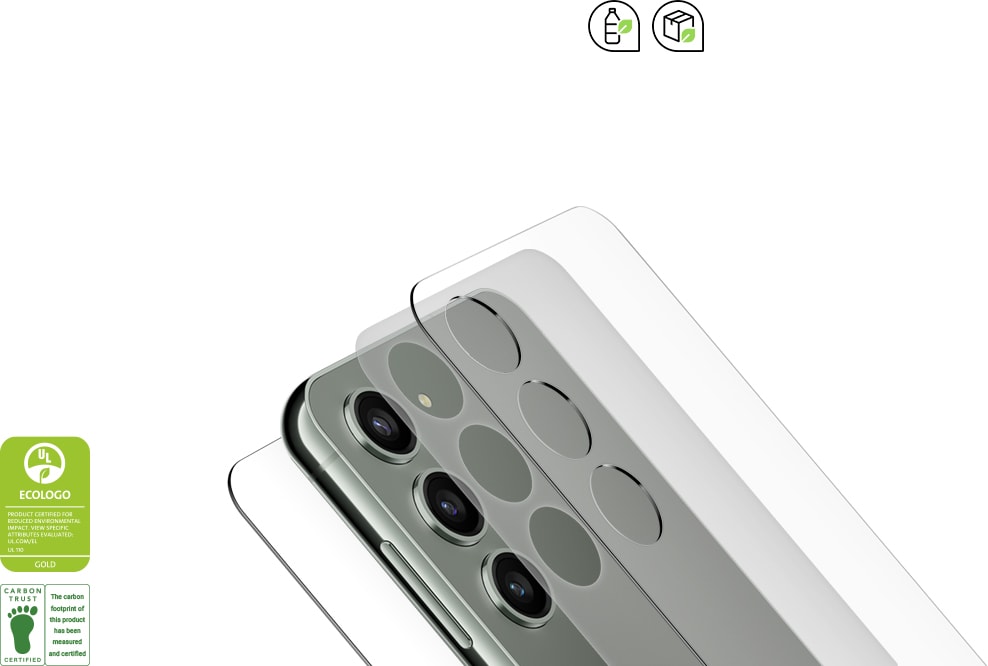
There is a Dark Mode, which looks fantastic in compatible apps. Since less light passes through the screen, I'm starting to believe I prefer it to the usual option and I might potentially conserve energy life as well.
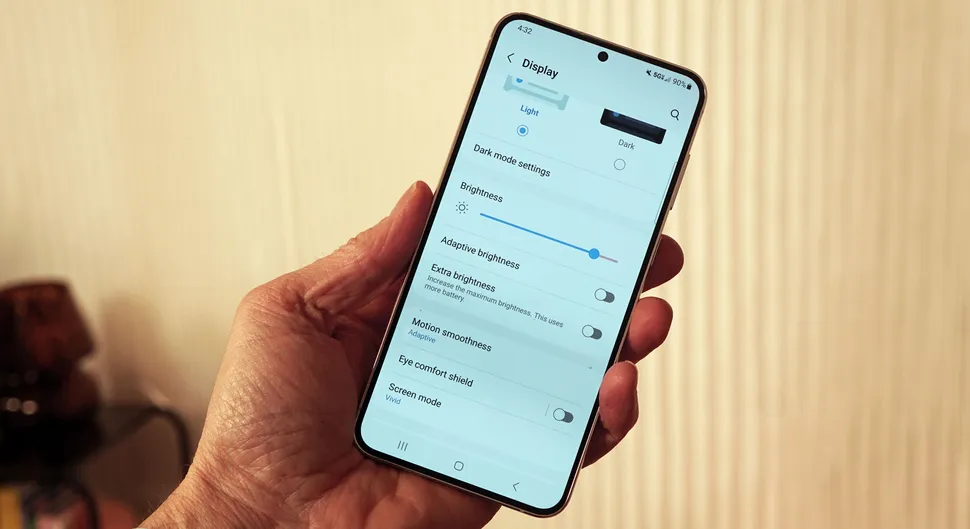 |
| Display options for the Samsung Galaxy S23 (Photo credit: Future / Lance Ulanoff) |
Design
Design
- A cleaner appearance has replaced the shape.
- Great look, feel, and materials
- Well upgraded Gorilla Glass Victus 2 defense
It's amazing how much removing elements from a smartphone can alter its
appearance.
Samsung's Galaxy S smartphones were not redesigned.
Instead, it milled away the raised contour metal surrounding the three
cameras on the Galaxy S23 and S23 Plus. Although it almost makes the
Galaxy S23 look a little bit more like a legion of other Android
smartphones and, yes, the iPhone 14 line, it is a cleaner and more
appealing appearance. The phone's slightly curved,
stainless-steel-appearing aluminum band also gives it a hint of retro
style that pays homage to the Galaxy series' early models.
The Galaxy S23 cameras appear larger despite the contour being removed,
but they aren't. Similar to previous year, these lenses are the same
size.
From the brushed Gorilla Glass Victus 2 on the rear to
the glossy Gorilla Glass Victus 2 covering the 6.1-inch edge-to-edge
screen, this exquisitely designed, IP68-rated (1.5M of water for 30
minutes) tablet is made of premium materials.
Even though you
might not notice the change, Samsung changed the placement of a few
antennas and buttons. Still there are a speaker grill along the bottom
border and a vanishingly small speaker slot at the top edge of the screen.
The Samsung Galaxy S23 range supports eSIM, however all models also
include a traditional SIM slot. Like to previous versions, there is no
3.5mm jack. I connected the phone to an excellent pair of Bluetooth
Samsung Galaxy Buds 2 Pro for my tests.
The Galaxy S23 has
approximately the same size and weight (168g) as the Galaxy S22 at 70.86 x
146.3 x 7.62 mm. I now think that this is the ideal range for phone sizes.
Like that phone, it essentially matches my Apple iPhone 14 Pro and fits my
average-sized hands well. For my palms and pant pockets, the S23 Plus and,
particularly, that strong S23 Ultra, are cumbersome.
It's also
important to note that although the phone comes with a USB-C data and
charging connection, the charging adaptor must be purchased separately.
The S23 does not allow super fast wired charging, which is available in
the S23 Plus and S23 Ultra, both of which have a 45W maximum output, but
it does enable rapid wired charging (so you may want to buy a 25W
charger).
My test unit is in Cream, which is definitely not my
preferred color, but you can also get it in Phantom Black, Green, or
Lavender. Lime and Graphite are two more color options that are
exclusively accessible on Samsung.com.
Camera
- The same fantastic back camera equipment as previous year
- New self-portrait cameras
- Here, a larger renovation would have been appreciated.
Samsung essentially left the S22's back camera array alone. On the other hand, I'm angry that Samsung didn't at least move the 108MP sensor from the Samsung Galaxy S22 Ultra down to the Galaxy S23 and S23 Plus. In Samsung's defense, they didn't meddle with a good thing.
The new Qualcomm Snapdragon 8 Gen 2 Mobile Platform for Galaxy's image processing is responsible for almost all advancements in photography, and the majority of them focus on low-light performance.
There are three primary back cameras:
- 50MP f1.8 main w/ OIS and 85-degree FoV
- 12MP, f2.2 ultrawide w/ 120-degree FoV
- 10MP f2.4 telephoto (3x) w/ OIS and 36-degree FoV
These three superb sensors provide images that can go head-to-head with the finest that Apple has to offer from its iPhone 14 series. However I do have a few complaints.
Samsung's default image of the world is still one that is too vivid. Greens are lighter, blues are deeper, and everything in general "pops" with heightened contrast. But, they cannot avoid the reality that they are not a perfect reflection of the actual world. From one perspective, this results in some absolutely outstanding photographs straight out of the camera. Compared to images taken with an iPhone 14 Pro of the same scene, I believe the latter to be more realistic and detailed.
Compared to images taken with an iPhone 14 Pro of the same scene, I believe the latter to be more realistic and detailed.
A perfect example is this photograph of my philodendron taken in backlight. One may contend that the telephoto lens on each phone produced a great image. Although the S23's image may appear to be more appealing, if you look closely at the leaves, you'll see that part of the plant's cellular detail has been lost and the color is more consistently green. Even the sky outside is bluer than it should be when viewed via the window and screen.
The primary 50MP lens produces identical results since it uses a 4-in-1 pixel binning method by default, which means that each "pixel" in the final image was really created utilizing the data of four. Samsung's Galaxy S23 chooses a vivid purple above the fine detail recorded in the iPhone 14 Pro camera in these images of my orchid. Although the latter is duller, it is also more accurate to the actual color of the plant.
To be clear, the Samsung Galaxy S23 cameras are flawless, and I have no doubt that you will find every photo to be "beautiful." Yet, some of them, particularly when it comes to realism, don't compare it to what you may receive with an iPhone 14.
Zoom capabilities are when the S23 series starts to completely outperform the iPhone. The S23's maximum optical zoom is 3x (10MP), but it also boasts AI-assisted Space Zoom that can zoom up to 30X in 10x steps. Although those aren't optical, the digitally enhanced zoom much beyond what the iPhone 14 Pro's digital zooming up to 15x can do.
There is a lot of image processing wizardry used to get these really decent 30x moon images, and I sometimes wonder how much of the end product is artificial intelligence (AI) filling in the blanks. But, there is presently nothing else quite like it in the smartphone photography market. Of course, the S23 Ultra's 100x Space Zoom is where the real excitement is, if you're willing to pay at least $1,199 / £1,249 / AU$1,949; across the pond, companies like Xiaomi have been brave enough to challenge Samsung's Ultra; however, generally speaking, the alternatives are sparse, when comparing the zoom capabilities across the entire S23 range.
The Galaxy S23 also performs optical and electrical picture stabilization remarkably effectively. Without the help, it would be difficult to catch anything useful at 30 times.
The 12MP ultrawide (with a 120-degree field of view) does a good job, but I believe Samsung should upgrade the sensor that powers it to 48MP or higher in order to preserve some of the detail in these ultra-wide shots. Samsung has been using what is believed to be the same 12MP sensor for more than a few generations at this point.
The portrait mode photography from both the S23's new 12MP selfie camera and the back primary camera really wowed me. The backdrop was well distinguished from the appropriate pieces by both lenses. Before or after the shot, you can change the blur effect's strength. Although you will see the graininess if you zoom in on the images, portrait mode photographs that struggle with lighting now seem better thanks to increased low-light performance.
As I have stated, this year's best low-light and nighttime camera is the Galaxy S23. I took photos in a variety of lighting situations and was consistently happy with the outcomes.
The actual standout, in my opinion, is the astrophotography setting, which is somewhat misleadingly called. I produced a number of midnight sky sequences that feature streaking clouds, aircraft, stars, and other objects in the night sky. Use the camera app's Hyperlapse feature under "More" to do this. Slow motion, professional photography controls, expert RAW photography (if you want to edit 50MP photographs in, instance, Adobe Lightroom), still night photography for a view of the stars, portrait video (like Apple's Cinematic Video), and panoramic images are all found here.
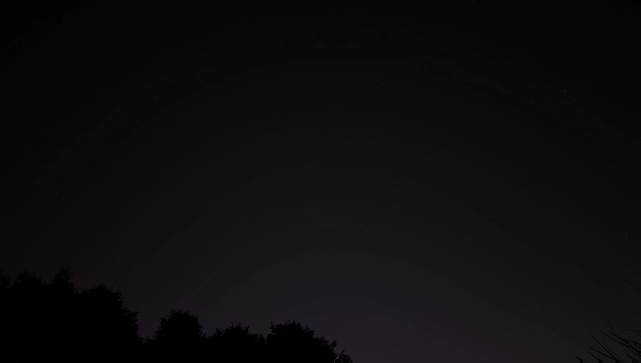 |
| Pic credit: Future / Lance Ulanoff |
I positioned the phone on a tripod for between two and four hours to record 14 seconds of timelapse footage after selecting 300x, which Samsung claims is the ideal speed for capturing the motion of the stars. The results are still rather impressive for a smartphone camera.
Overall, this is a very adaptable camera system that can capture images in a variety of lighting situations. The Super Steady video option is a strong rival to the iPhone 14's Action Mode, and it enables shooting up to 8K 30fps video (which appears smooth but isn't necessarily editable in third-party apps). I went around my lawn while carrying both phones to test how much wobble each phone's digital Steadicam mode could eliminate. They both managed to get rid of the significant bumps, but indifferently.
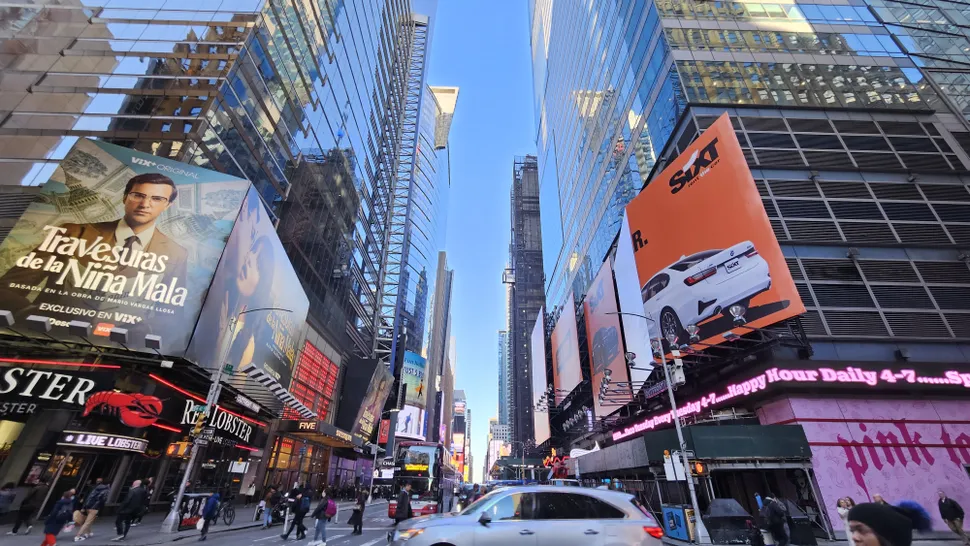 |
| Click with Samsung Galaxy S23 Ultrawide camera (Pic credit: Future / Lance Ulanoff) |
Performance
The Qualcomm Snapdragon 8 Gen 2 Mobile Platform for Galaxy, a specialized and somewhat faster (overclocked to 3.36GHz) variation of the common mobile CPU available in devices like the OnePlus 11, powers the whole Samsung Galaxy S23 series.
The OpenCL scores on Geekbench 5 significantly outperformed those of the Snapdragon 8 Gen 1 in comparison tests. The single and multicore results of the Galaxy S23, however, still fall short of those of the iPhone 14 Pro's A16 Bionic, even though the graphics scores are more easily comparable across platforms. Qualcomm is still narrowing the gap. It helps that Samsung supports their customized Snapdragon 8 Gen 2 with 8GB of RAM (8GB of LPDDR5X RAM, which is quicker and uses less power than the rumored 6GB of LPDDR5 RAM in the iPhone 14 Pro).
 |
| Samsung Galaxy S23 benchmarks (Image credit: Future) |
The Qualcomm chip maxes out a lot of our Adobe Premiere Rush tests in our lab testing, giving the impression that it has the same amount of headroom as the A16 Bionic. The timings and overall scores in the Extreme rendering behind the A16 Bionic by only a hair.
The Galaxy S23 starts out with 128GB of storage. Choose the S23 Plus or S23 Ultra, both of which start at 256GB, if you need extra storage up front.
For consumers in areas that are less fortunate than the US, it's also important to note that there is no longer a silicon disparity, since every S23 now runs on Qualcomm hardware rather than a combination of Snapdragon and (consistently worse) Samsung Exynos, which varied from territory to area.
Battery
Samsung was able to get a little larger battery inside the Galaxy S23, increasing it from 3,700mAh in the S22 to 3,900mAh in the S23 (albeit this is still 100mAh less than the battery in the Galaxy S21).
According to my own experience, the battery lasted longer than a day. By "day," I mean that I could use the phone from 7 AM until 10 PM. I could get through the first half of the morning on that same battery if I didn't charge overnight.
The Galaxy S23 achieved 10:27 hours of battery life in adaptive refresh rate mode and 11:20 hours at 60Hz during our lab-based rundown testing.
Using a 25W charger, I was able to charge my device to more over 50% in 30 minutes during my charge testing, which is about in accordance with our lab tests, which revealed that we could charge to 55% in that time.
Whether you want to charge your Galaxy Buds 2 Pro, Galaxy Watch 5, or even another phone off the back of your new S23, it supports quick wireless charging and wireless PowerShare at the same peak 25W as its predecessor.
Wireless PowerShare, like other interesting S23 features, is not enabled by default but is simple to locate via a Settings search.
Connectivity
The Samsung Galaxy S23 is come with 5G connectivity, which means you can enjoy lightning-fast internet speeds. In addition, the phone will likely support Wi-Fi 6.
I was able to maintain a connection in the majority of circumstances because to my Galaxy S23's connection to T-first-rate Mobile's 5GUC network. I was able to download applications, watch Netflix in HD throughout my commute, and text my pals about media. I was able to complete a good deal of commuting work by using the phone as a personal hotspot. I had no issue logging on to my 5GHz Wi-Fi network at home. Unfortunately, I can't test the S23's cutting-edge WiFi capabilities because I don't have access to a WiFi 6E network.
When it comes to satellite communication, Samsung and Apple are not yet on an equal basis. At CES 2023, Qualcomm demonstrated how a sample device powered by the Snapdragon 8 Gen 2 chip could send and receive texts through satellite. The latter introduced Emergency SOS over Satellite with the iPhone 14 line. The X70 5G modem, which Qualcomm tells me is capable of satellite communications, is paired with the Snapdragon 8 Gen 2 in both the S23 and S23 Plus. But, the functionality is not activated, and there is no estimated timeframe for turning it on.
|
|
128 GB model | 256 GB model |
|---|---|---|
| Price: | $799.99 / £849 / AU$1,349 | $859.99 / £899 / AU$1,449 |
| Dimensions: | 70.86 x 146.3 x 7.62 mm | 70.86 x 146.3 x 7.62 mm |
| Weight: | 168g | 168g |
| OS: | Android 13 | Android 13 |
| Screen Size: | 6.1 inch | 6.1 inch |
| Resolution: | 2340 x 1080 pixels | 2340 x 1080 pixels |
| CPU: | Qualcomm Snapdragon Gen 8 2 Mobile Platform for Galaxy | Qualcomm Snapdragon Gen 8 2 Mobile Platform for Galaxy |
| RAM: | 8GB | 8GB |
| Storage: | 128GB | 256GB |
| Battery: | 3,900 mAh | 3,900 mAh |
| Rear Cameras: | 50MP Wide, 12MP Ultrawide, 10MP telephoto | 50MP Wide, 12MP Ultrawide, 10MP telephoto |
| Front Camera: | 12MP | 12MP |
Price and Release Date
February 17, 2023
The Galaxy S23 phones is released on February 17, 2023, a week earlier than the S22 launch last year.
Price:
$799.99 / £849 / AU$1,349 $859.99 / £899 / AU$1,449
Conclusion
The Samsung Galaxy S23 is expected to be a flagship device with top-of-the-line features and specifications. From a powerful processor and ample storage to an impressive camera and long-lasting battery, this phone is shaping up to be a must-have for tech enthusiasts.
Is it worth buying?
Purchase it if
A phone suitable for little hands
The Samsung Galaxy S23 is a full-featured flagship that costs $799.99 and doesn't compromise on performance, aesthetics, or capabilities.
A phone suitable for little hands
The perfect size for a smartphone, at 6.1 inches, is the Goldilocks of screen sizes.
Don't purchase if...
You are the owner of Samsung Galaxy S22
Certainly, you get a stronger Processor and a larger battery, but those improvements alone, along with a few other nice ones, are insufficient to persuade users to upgrade from the previous model.
You demand the best camera experience possible.
If you love the Galaxy but want the greatest photography the S series has to offer, you should get the S23 Ultra with its 10x zoom and 100x Space Zoom.



